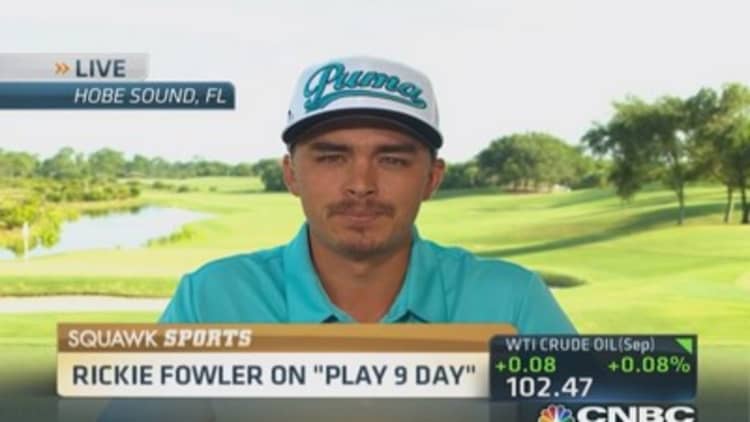Customers who walk into a Topgolf location at night may run into more partying than golfing. Music and conversation replace golf's staid silence as players hit from a series of tees.
Competitors in the game, which scores players based on where they hit microchip-infused balls, sit at tables nearby, eating and drinking while they wait to hit. Some customers hang back from the tees altogether, having a drink at a bar until their next round (the golf kind, not the drink kind) is about to start.
Topgolf CEO Ken May wouldn't call the business "traditional" golf. But Topgolf is among the businesses and organizations that have captured the attention of young adults, a demographic that largely continues to shun the game's original form.
"We can revitalize it by bringing a demographic back to golf that wouldn't have played," May said.
Just last year, 200,000 players under the age of 35 left the game, according to the National Golf Foundation. Most summers of late, fewer than 10 percent of people playing at traditional courses in the United States are under age 30, according to sources including marketing data firm DMDatabses.com.
Read MoreGolf is on the decline in the US because...
There is potentially good news, however: Many young adults haven't left the game completely. They may just want a different golf experience—especially a cheaper one.
"They have less time and less money—there's nothing new about that," said Tom Stine, partner at Golf Datatech.
May noted that one game of Topgolf, which allows four to six people to play, takes 30 minutes. Prices vary at the company's locations, but most won't charge more than $40 an hour, with equipment included.

Topgolf, which was founded in 2000 as a fusion of golf and entertainment, tries to bring in customers between 18 and 35 years old. May believes the company has engaged the age group, as customers will often wait in line three to four hours to play.
Demand has surged so much at its 10 U.S. and three U.K. locations, he said, that Topgolf is opening 13 new locations in the next 15 months. May said the company has consistently beaten its own revenue projections.
"We feel like it's a magical concept that's just going to grow," May said.
Read MoreThis is big business in Korea (and it's not K-pop)
Golf needs to "adapt to the needs" of young adults and young professionals, said Kris Hart, CEO of Nextgengolf. Many young adults want more engaging recreation that takes less time and costs less to enjoy, he said.
Full 18-hole rounds can take four hours or more and cost anywhere from about $30 to a few hundred dollars, depending on the course. Add on the costs of equipment—clubs, balls and apparel—and the monetary commitment can turn many young adults away.
"The industry has to be more open to nontraditional ideas," Hart said.
Nextgengolf works to get 18- to 34-year-olds to play golf through college club teams, membership subsidies and alternative tournaments. More young adults have flocked to college club golf in particular, as Nextgengolf says more than 13,000 college students now play through the organization.
Hart "doesn't believe traditional golf is dead." But he thinks quicker, more affordable alternatives can help bridge the gap. "Half the battle is getting someone to hold a club," he said.
May noted that the social aspect of Topgolf brings customers who may not have golfed in the first place.
Read More
"Fifty percent of customers are categorized as nongolfers," May said.
Alternative forms of golf may "make it easier for beginners," Stine said. He cited a version of golf that uses a bigger hole, making it easier for players to putt.
But some of those games may "confuse the issue." He added that fundamentally, younger adults might just not have the resources to be a driving demographic in "traditional" golf.
—By Jacob Pramuk, special to CNBC.com


